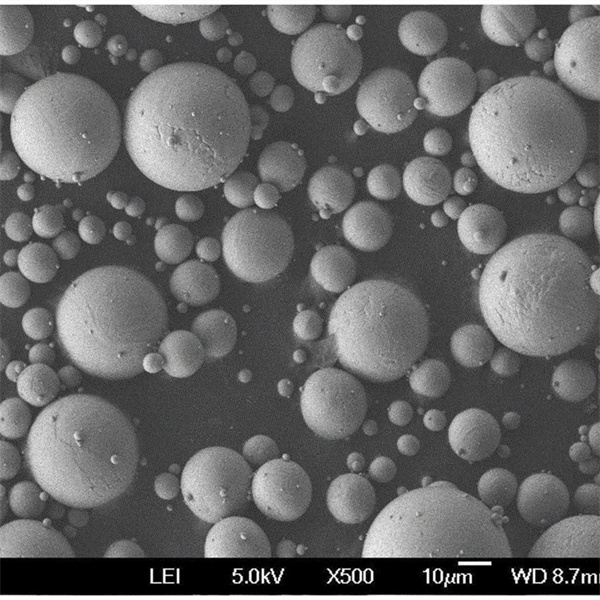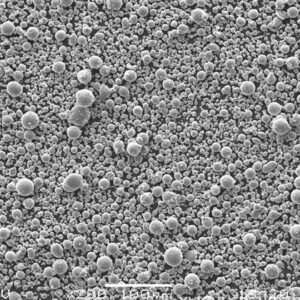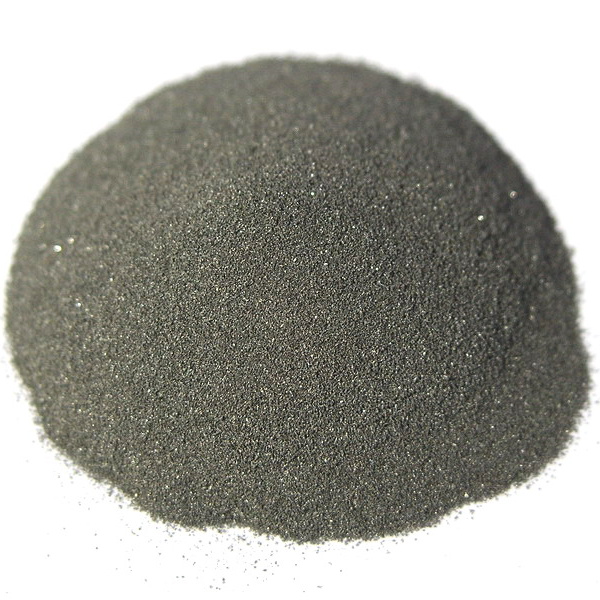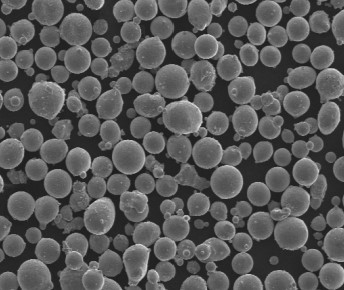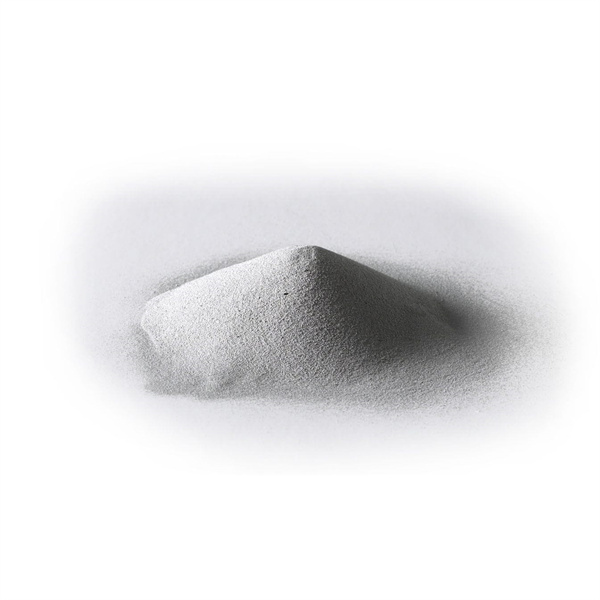ผง M2
M2 เป็นผงเหล็กความเร็วสูงที่โดดเด่นด้วยความแข็งสูงและความต้านทานการสึกหรอพร้อมกับความทนทานที่ดีและความแข็งแรงในการอัด มีการใช้กันอย่างแพร่หลายในการผลิตสารเติมแต่งโลหะเพื่อผลิตเครื่องมือที่ทนทานสำหรับการตัดการขึ้นรูปและการประทับตรา
Low MOQ
Provide low minimum order quantity to meet different needs.
OEM & ODM
Provide customized products and design services to meet unique customer needs.
Adequate Stock
Ensure fast order processing and provide reliable and efficient service.
ความพึงพอใจของลูกค้า
ให้ผลิตภัณฑ์ที่มีคุณภาพสูงด้วยความพึงพอใจของลูกค้าที่แกนกลาง
แบ่งปันผลิตภัณฑ์นี้
สารบัญ
M2 เป็นผงเหล็กความเร็วสูงที่โดดเด่นด้วยความแข็งสูงและความต้านทานการสึกหรอพร้อมกับความทนทานที่ดีและความแข็งแรงในการอัด มีการใช้กันอย่างแพร่หลายในการผลิตสารเติมแต่งโลหะเพื่อผลิตเครื่องมือที่ทนทานสำหรับการตัดการขึ้นรูปและการประทับตรา
Composition of M2 Powder
The composition of M2 high-speed steel powder is:
| องค์ประกอบ | น้ำหนัก % | วัตถุประสงค์ |
|---|---|---|
| ทังสเตน | 6.0 – 6.8 | Hardness, wear resistance |
| โมลิบดีนัม | 4.8 – 5.5 | Toughness, strength |
| โครเมียม | 3.8 – 4.5 | การแข็งตัว, ความต้านทานการสึกหรอ |
| วานาเดียม | 1.9 – 2.2 | การแข็งตัว, ความต้านทานการสึกหรอ |
| คาร์บอน | 0.78 – 0.88 | Hardening |
| แมงกานีส | 0.15 – 0.45 | Hardening |
| ซิลิคอน | 0.15 – 0.45 | deoxidizer |
The high tungsten, molybdenum and chromium content impart excellent hardness and wear resistance.
Properties of M2 Powder
Key properties of M2 powder include:
| คุณสมบัติ | คำอธิบาย |
|---|---|
| ความแข็ง | 64 – 66 HRC when heat treated |
| สึกหรอ | Excellent abrasion and erosion resistance |
| ความเหนียว | Higher than tungsten carbide grades |
| แรงอัด | Up to 300 ksi |
| ความต้านทานความร้อน | Can be used up to 600°C |
| ความต้านทานการกัดกร่อน | Better than plain carbon steels |
The properties make M2 suitable for durable cutting, stamping and forming tooling.
AM Process Parameters for M2 Powder
Typical parameters for printing M2 powder include:
| พารามิเตอร์ | ค่าทั่วไป | วัตถุประสงค์ |
|---|---|---|
| ความสูงของชั้น | 20-50 μm | Resolution versus build speed |
| พลังงานเลเซอร์ | 250-500 W | การหลอมละลายเพียงพอโดยไม่มีการระเหย |
| ความเร็วในการสแกน | 400-1200 มม./s | ความหนาแน่นและอัตราการผลิต |
| ระยะห่างฟัก | 80-120 μm | คุณสมบัติเชิงกล |
| โครงสร้างสนับสนุน | น้อยที่สุด | ถอดออกได้ง่าย |
| กด isostatic ร้อน | 1160°C, 100 MPa, 3 hrs | กำจัดรูพรุน |
พารามิเตอร์ที่เหมาะสำหรับความหนาแน่นโครงสร้างจุลภาคอัตราการสร้างและข้อกำหนดหลังการประมวลผล
Applications of 3D Printed M2 Tooling
AM fabricated M2 components are used for:
| อุตสาหกรรม | Tooling applications |
|---|---|
| เกี่ยวกับยานยนต์ | Stamping dies, forming tools, fixtures |
| การบินและอวกาศ | Jigs, fixtures, trim tools |
| Appliances | Punches, blanking dies, bending dies |
| เครื่องอุปโภคบริโภค | Injection molds, stamping dies |
| ทางการแพทย์ | Cutting tools, rasps, drill guides |
Benefits over traditionally processed M2 tooling include complexity, lead time and cost reduction.
Specifications of M2 Powder for AM
M2 powder must meet strict specifications:
| พารามิเตอร์ | ข้อมูลจำเพาะ |
|---|---|
| ช่วงขนาดอนุภาค | 15-45 μmทั่วไป |
| รูปร่างอนุภาค | สัณฐานวิทยาทรงกลม |
| ความหนาแน่นที่ชัดเจน | & gt; 4 กรัม/ซีซี |
| แตะความหนาแน่น | & gt; 6 กรัม/ซีซี |
| อัตราการไหลของห้องโถง | & gt; 23 วินาทีสำหรับ 50 กรัม |
| ความบริสุทธิ์ | & gt; 99.9% |
| ปริมาณออกซิเจน | & lt; 300 ppm |
การแจกแจงขนาดที่กำหนดเองและระดับความชื้นที่ควบคุมได้
Suppliers of M2 Powder
Reputable M2 powder suppliers include:
| ผู้จัดหา | ที่ตั้ง |
|---|---|
| Sandvik Osprey | สหราชอาณาจักร |
| ช่างไม้ | สหรัฐอเมริกา |
| ทำให้ขุ่นมัว | สวีเดน |
| Hoganas | สวีเดน |
| เทคโนโลยี LPW | สหราชอาณาจักร |
Prices range from $50/kg to $120/kg based on quality and order volume.
Handling and Storage of M2 Powder
As a reactive material, careful M2 powder handling is essential:
- Store sealed containers away from moisture, sparks, ignition sources
- ใช้การขยายก๊าซเฉื่อยในระหว่างการถ่ายโอนและการจัดเก็บ
- อุปกรณ์ภาคพื้นดินเพื่อกระจายค่าคงที่
- Avoid dust accumulation through extraction systems
- Follow applicable safety precautions
เทคนิคที่เหมาะสมช่วยให้มั่นใจได้ว่าสภาพผงที่ดีที่สุด
Inspection and Testing of M2 Powder
Quality testing methods include:
| วิธี | พารามิเตอร์ทดสอบ |
|---|---|
| Sieve analysis | การกระจายขนาดอนุภาค |
| SEM imaging | สัณฐานวิทยาของอนุภาค |
| EDX | Chemistry and composition |
| XRD | ขั้นตอนปัจจุบัน |
| เครื่องพ่นยา | ความหนาแน่น |
| อัตราการไหลของห้องโถง | ความสามารถในการไหลของผง |
การทดสอบตามมาตรฐาน ASTM ตรวจสอบคุณภาพของผงและความสอดคล้องของแบทช์
Comparing M2 to Alternative Tool Steel Powders
M2 compares to other tool steel alloys as:
| อัลลอยด์ | สึกหรอ | ความเหนียว | ค่าใช้จ่าย | Ease of Processing |
|---|---|---|---|---|
| อะไร | ยอดเยี่ยม | ดี | ปานกลาง | ยุติธรรม |
| H13 | ดี | ยอดเยี่ยม | ต่ำ | ยอดเยี่ยม |
| ถูกต้อง | ยอดเยี่ยม | ยุติธรรม | สูง | ยาก |
| 420 stainless | ยากจน | ยอดเยี่ยม | ต่ำ | ยอดเยี่ยม |
With its balanced properties, M2 supersedes alternatives for many wear-resistant tooling applications.
Pros and Cons of M2 Powder for Metal AM
| ข้อดี | ข้อเสีย |
|---|---|
| ความแข็งและความต้านทานการสึกหรอที่ยอดเยี่ยม | Lower toughness than cold work tool steels |
| Good heat resistance and thermal stability | จำเป็นต้องโพสต์การประมวลผลเช่นการรักษาสะโพกและความร้อน |
| Established credentials for metal AM | Controlled atmosphere storage required |
| Cost advantage over exotic tool steels | Difficult to machine after printing |
| Properties match conventional M2 | Limited corrosion resistance |
M2 enables high wear resistance additive tooling, though not suitable for highly corrosive environments.
Frequently Asked Questions about M2 Powder
Q: What particle size range works best for printing M2 powder?
ตอบ: ช่วงทั่วไปคือ 15-45 ไมครอน ให้ความสามารถในการไหลของผงที่ดีที่สุดรวมกับความละเอียดสูงและชิ้นส่วนที่หนาแน่น
Q: What post-processing methods are used for M2 AM parts?
A: Hot isostatic pressing, heat treatment, surface grinding/EDM, and shot peening are typically used to eliminate voids, harden, and finish parts.
Q: Which metal 3D printing process is ideal for M2 alloy?
A: M2 can be effectively printed using selective laser melting (SLM), direct metal laser sintering (DMLS) and electron beam melting (EBM) processes.
Q: What accuracy and surface finish can be expected for M2 printed parts?
A: Post-processed M2 components can achieve dimensional tolerances and surface finish comparable to CNC machined M2 tooling.
Q: What industries use additively manufactured M2 tooling components?
A: Automotive, aerospace, medical, consumer goods, appliances, and industrial sectors benefit from 3D printed M2 tooling.
Q: What is the key difference between M2 and M4 grades of high speed steel?
A: M4 has slightly lower vanadium and molybdenum content leading to a better combination of wear resistance and toughness compared to M2.
Q: Does M2 require support structures when 3D printing?
A: Minimal supports are recommended on overhangs and bridges to prevent deformation and allow easy removal after printing.
Q: What density can be expected with optimized M2 3D printed parts?
A: Density above 99% is achievable for M2 using ideal parameters tailored specifically for this alloy.
Q: What defects can occur when printing M2 powder?
A: Potential defects are cracking, distortion, porosity, incomplete fusion, and surface roughness. Most can be prevented through optimized parameters.
Q: Is HIP required for all M2 AM tooling components?
A: While highly recommended, HIP may not be absolutely necessary for non-critical tooling applications. Heat treatment alone may suffice.
เกี่ยวกับ met3dp
ประเภทสินค้า
ลดกระหน่ำ
ติดต่อเรา
มีคำถามอะไรไหม? ส่งข้อความถึงเราตอนนี้! เราจะให้บริการคำขอของคุณกับทีมงานทั้งหมดหลังจากได้รับข้อความของคุณ


